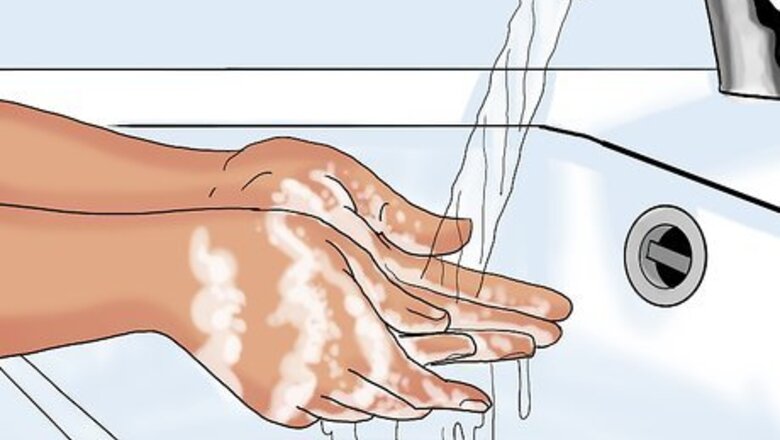
views
Breaking the Ampule
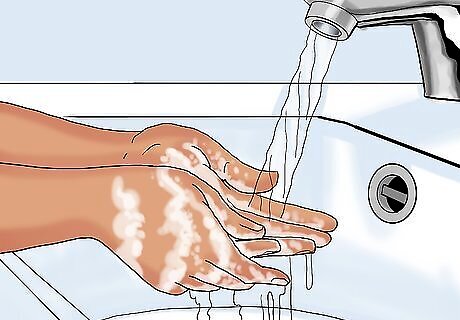
Wash and sanitize your hands. Use soap and hand sanitizer to ensure that your hands are clean before you handle the ampule. If you have powder-free latex gloves, put them on.
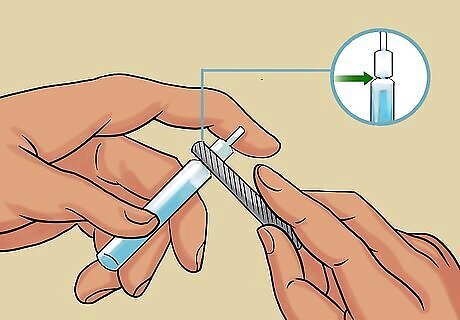
Score the ampule if it does not have a score marking. The ampule will have to be scored (lightly cut to weaken the glass) before it will open. If the ampule has a painted ring around the neck, or the narrowest portion of the ampule, it has been scored already. If not, take a fine file and run it gently around the neck, taking care not to press hard enough to break it. Files are usually provided with ampules.
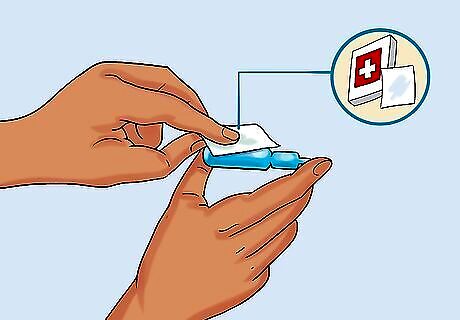
Clean the ampule with an alcohol swab. Take a fresh alcohol swab and gently wipe the entire surface of the ampule to clean it. If it seems wet or slippery afterwards, let it dry for 1-2 minutes before handling it.
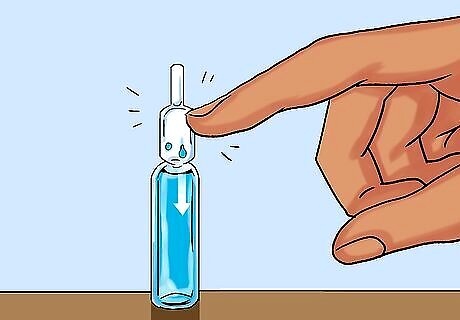
Make sure all the liquid is in the bottle of the ampule. Hold the ampule with the top pointing straight up. Make sure that all the liquid is below the neck of the ampule, where it will break. If some of the liquid appears to be above the neck, flick the top of the ampule gently until the liquid drops to the bottom.
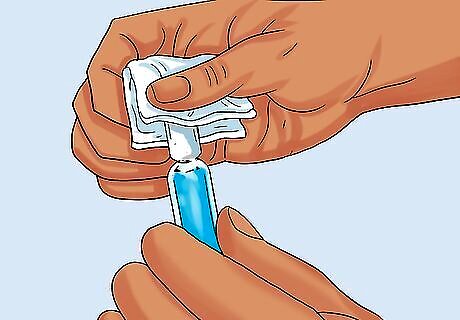
Use gauze to protect your hands when you grip the ampule. Wrap each half of the ampule in gauze before gripping it with your hand. This will help you hold on to the glass firmly, and also protect your fingers if the glass shatters. Your index finger and thumb should be gripping the ampule on each side of the neck, with your index fingers braced against each other. The top half of the ampule should be in your dominant hand, and the bottom half should be in your non-dominant hand. If there is a painted dot on the top half of the ampule, this is the pressure point. You should place the thumb of your dominant hand directly on top of this dot. If there is no dot, place the center of your thumb pad slightly above where the top of the ampule begins to curve in towards the neck.
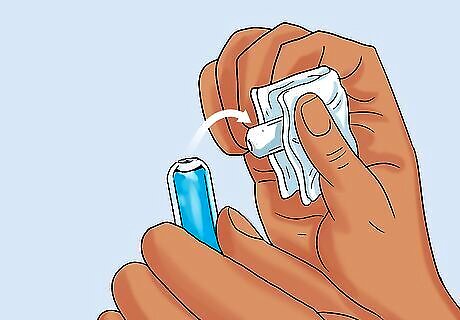
Hold the bottom half of the ampule in place and snap the top half towards you. Keeping your non-dominant hand still, snap the top half by quickly bending it towards you so the part that's breaking is facing away from you. The thumb of your dominant hand should stay on the pressure point while your fingers pull the tip of the top half towards you. Make sure you break it at least a few feet away from your other materials and anything you don’t want to risk getting broken glass on.
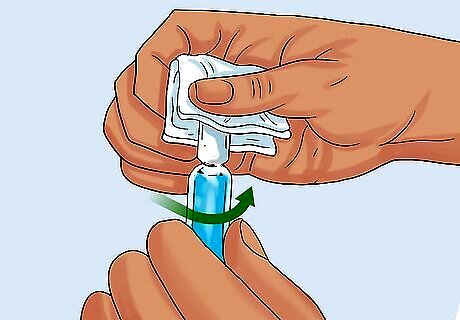
Rotate the ampule and try again if the ampule didn’t break. If the ampule does not snap at all, twist it slightly and try again, keeping your hands in the same position and gripping it firmly through the gauze.
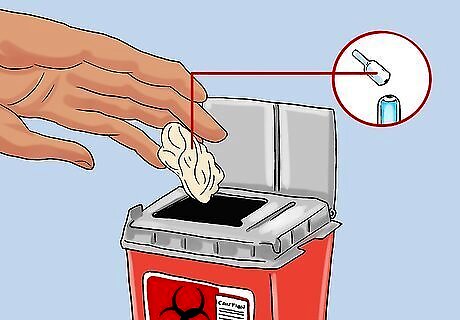
Wrap the top half of the ampule in tissue and discard it. Use paper or thick tissue to safely wrap the empty top half of the ampule before throwing it in the trash. Even if you don’t see any sharp edges on the broken ampule, it’s best to be cautious. If a sharps container is available, you can dispose of the unwrapped ampule in the sharps container instead. If the ampule contains biohazardous materials, it should not be thrown in the trash. Put it in a labeled biohazardous waste container and follow your city’s guidelines for disposing of the container.
Withdrawing Solution from the Ampule

Attach a filter needle to a syringe. Even if the ampule breaks cleanly and you can’t see any broken glass, it’s a good idea to use a filter needle to ensure that no glass is drawn out with the solution. Insert the needle into the syringe with the needle guard still on, and twist it gently to the right until it clicks. Make sure that it is secure before continuing.
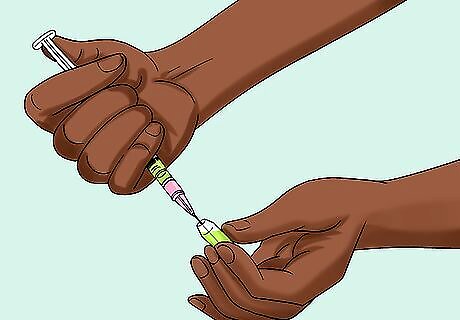
Insert the syringe needle into the ampule without touching the rim. Being careful not to touch the needle to the sides of the ampule where it broke, insert it as far as it will go. If the needle isn’t long enough to reach the liquid, you can tilt the ampule until the liquid is within reach.
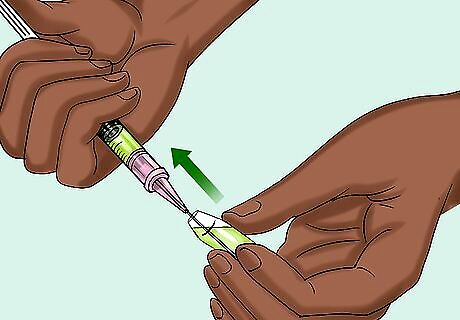
Draw the solution out while keeping the needle submerged. Keep the tip of the needle under the liquid line to avoid catching air bubbles in the solution, and draw back slowly on the syringe plunger so the liquid is drawn up into the barrel. Tilt the ampule if you need to in order to get the last of the liquid.
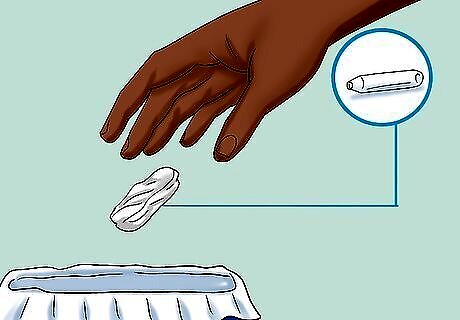
Wrap the ampule in tissue and discard it once it’s empty. Take the syringe out of the ampule without moving the plunger. Wrap the empty ampule in paper or thick tissue before it’s put in the trash. That way, if it still has sharp edges or is broken while in the trash, it won’t hurt anyone who handles the trash.
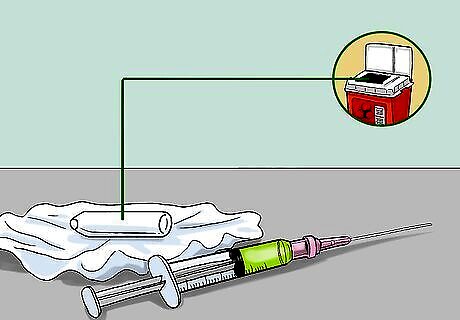
If possible, you can dispose of the broken ampule in a sharps container without wrapping it first. Be careful when handling the broken pieces. Do not throw the ampule in the trash if it contained biohazardous materials. You will have to dispose of it in a labeled biohazardous waste container and follow your city’s guidelines for disposing of the container.
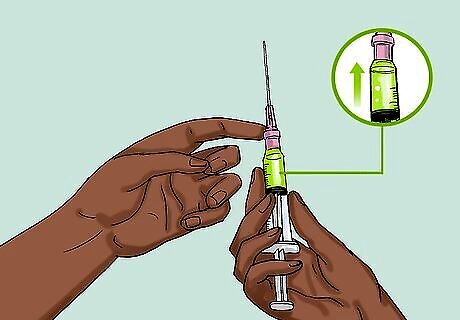
Remove any air bubbles from the syringe. Hold the syringe so that the needle is pointing straight up. Tap the barrel of the syringe so that any air bubbles in the solution move to the top. You can then push very slightly on the plunger, which will move the air out through the needle. Go slowly and be careful not to move any of the solution out. When there appear to be nothing between the plunger and the tip of the syringe but the solution, you have removed all the air bubbles.
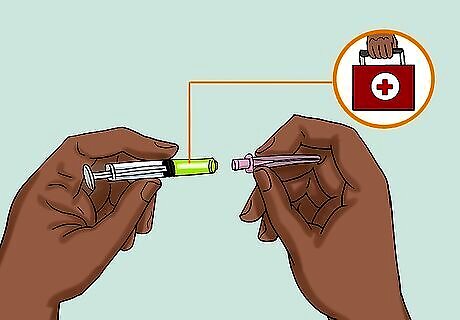
Transfer the solution to its final destination. The solution is now ready to be administered or moved to a container. Make sure you change the needle before you administer the solution or move it to a container.

Dispose of the used syringe and needle in a sharps container. Being careful not to touch the needle when you handle it, place the syringe in a labeled sharps container. This container should not be thrown in the regular trash -- look up your city’s guidelines for safely disposing of sharps. You may need to drop it off at a special site or arrange a pick-up.




















Comments
0 comment